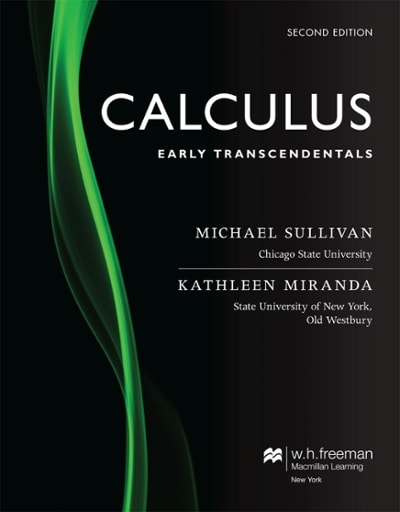Question
1. A sample of size 36 from a normally distributed population variable with population standard deviation 20 had a sample mean of 88. Find a
1. A sample of size 36 from a normally distributed population variable with population standard deviation 20 had a sample mean of 88. Find a 99% confidence interval for the population mean.
2. 2. A sample of size 90 from a population variable had a sample mean of 4.74 and a sample standard deviation of 0.71. Find a 90% confidence interval for the population mean.
3. 3. Import the "reacttimes" data set and consider the 50 observations of the variable "Times" to be a sample from a larger population. Find a 96% confidence interval for the population mean. Construct a normal quantile plot and comment on the appropriateness of the procedure.
Hint: reacttimes <- read.table("https://www.math.uh.edu/~wwang/MATH3339/dataset/reacttimes.txt",header = T) t.test(reacttimes$Times,conf.level = 0.96) qqnorm(reacttimes$Times) qqline(reacttimes$Times)
4. We wish to estimate the population mean of a variable that has standard deviation 70.5. We want to estimate it with an error no greater than 6 units with probability 0.99. How big a sample should we take from the population? What happens if the standard deviation and the margin of error are both doubled?
5. The Food and Drug Administration monitors the production line of a breakfast cereal company to determine what proportion of its boxes of cereal contain insect parts. The FDA would like to know that proportion to within 5 percentage points with 95% confidence. How many boxes of cereal should they sample? (Section 7.4.3, problem 1 from textbook)
6. Suppose the company has been inspected before and that previously the proportion of cereal boxes with insect parts was 0.15. The FDA wants to be as unobtrusive as possible. How many boxes of cereal should they sample? (Section 7.4.3, problem 2 from textbook)
7. The FDA sampled 60 boxes of cereal and found 10 with insect parts. Find a 95% confidence interval for the true proportion of cereal boxes with insect parts. Use R to answer this question. Hint: prop.test(n,x,correct=F)
8. A sample of size 20 from a normal distribution has sample mean 3.5 and sample variance 14.75. Find 90% confidence intervals for the variance and standard deviation of the distribution.
9. The variable "Temp" in the airquality data set is approximately normally distributed. Treating the data as a sample from a larger normal population, find 95% confidence intervals for the variance and standard deviation of temperatures.
Hint: (the variance of "Temp")
>var(airquality$Temp)
10. Suppose that a random sample of 50 bottles of a particular brand of cough syrup is selected and the alcohol content of each bottle is determined. Let denote the average alcohol content for the population of all bottles of the brand under study. Suppose that the resulting 95% confidence interval is (7.8, 9.4).
a. Would a 99% confidence interval calculated from this same sample have been narrower or wider than the given interval? Explain your reasoning.
b. Consider the following statement: There is a 95% chance that is between 7.8 and 9.4. Is this statement correct? Why or why not?
c. Consider the following statement: We can be highly confident that 95% of all bottles of this type of cough syrup have an alcohol content that is between 7.8 and 9.4. Is this statement correct? Why or why not?
d. Consider the following statement: If the process of selecting a sample of size 50 and then computing the corresponding 95% interval is repeated 100 times, 95 of the resulting intervals will include . Is this statement correct? Why or why not?
11. The inside diameter of a randomly selected piston ring is a random variable with mean value 12 cm and standard deviation 0.04 cm. a. If is the sample mean diameter for a random sample of n = 16 rings, where is the sampling distribution of centered, and what is the standard deviation of the distribution? b. Answer the questions posted in part (a) for a sample size of n =64 rings. c. For which of the two random samples, the one of part (a) or the one of part (b), is more likely to be within 0.01 cm of 12 cm? Explain your reasoning.
Step by Step Solution
There are 3 Steps involved in it
Step: 1

Get Instant Access to Expert-Tailored Solutions
See step-by-step solutions with expert insights and AI powered tools for academic success
Step: 2

Step: 3

Ace Your Homework with AI
Get the answers you need in no time with our AI-driven, step-by-step assistance
Get Started


